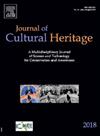Non-destructive examination of ancient vitreous materials from Southwest Asia: Synchrotron computed tomography at the BEATS beamline of SESAME
IF 3.5
2区 综合性期刊
0 ARCHAEOLOGY
引用次数: 0
Abstract
The analysis of archaeological objects poses a set of challenges related to the fragility and uniqueness of the material and requires special non-invasive techniques. This article presents applications of Synchrotron X-ray Computed Tomography (SXCT) on archaeological vitreous materials, namely glass, faience, and Egyptian blue. Using five different case studies, we provide protocols developed at the beamline ID10-BEATS of SESAME (Jordan) to understand raw material, production, and degradation of vitreous assemblages from sub-mm to several cm in size. The use of high-resolution 3-dimensional X-ray imaging combined with phase-contrast generation allows to identify and differentiate ancient faience and pigment production technologies, quantify the severity and microstructure of glass corrosion, and assess the fracture and mechanical fragility of large artifacts and assemblies such as mosaics. The combination of SXCT with synchrotron X-ray fluorescence mapping and X-ray absorption near edge structure allows to examine complementary structural and chemical data of unique examples of the Southwest Asian cultural heritage. The availability of a SXCT facility at the heart of Southwest Asia facilitates and enhances the non-destructive examination and conservation of ancient vitreous materials of the region, proving the relevance of the technique for archaeologists, museums, and cultural heritage specialists.
西南亚古代玻璃材料的无损检测:同步加速器计算机断层扫描在SESAME的BEATS光束线上
考古对象的分析提出了一系列与材料的脆弱性和独特性相关的挑战,需要特殊的非侵入性技术。本文介绍了同步加速器x射线计算机断层扫描(SXCT)在考古玻璃材料上的应用,即玻璃、陶器和埃及蓝。通过五个不同的案例研究,我们提供了在SESAME (Jordan)的ID10-BEATS光束线上开发的协议,以了解从亚毫米到几厘米大小的玻璃体组合的原材料、生产和降解。使用高分辨率三维x射线成像结合相衬生成,可以识别和区分古代彩陶和颜料生产技术,量化玻璃腐蚀的严重程度和微观结构,并评估大型文物和组件(如马赛克)的断裂和机械脆弱性。SXCT与同步加速器x射线荧光作图和x射线吸收近边结构相结合,可以检查西南亚文化遗产独特实例的互补结构和化学数据。西南亚中心的SXCT设施的可用性促进并加强了该地区古代玻璃材料的无损检测和保护,证明了该技术对考古学家、博物馆和文化遗产专家的相关性。
本文章由计算机程序翻译,如有差异,请以英文原文为准。
求助全文
约1分钟内获得全文
求助全文
来源期刊

Journal of Cultural Heritage
综合性期刊-材料科学:综合
CiteScore
6.80
自引率
9.70%
发文量
166
审稿时长
52 days
期刊介绍:
The Journal of Cultural Heritage publishes original papers which comprise previously unpublished data and present innovative methods concerning all aspects of science and technology of cultural heritage as well as interpretation and theoretical issues related to preservation.
 求助内容:
求助内容: 应助结果提醒方式:
应助结果提醒方式:


